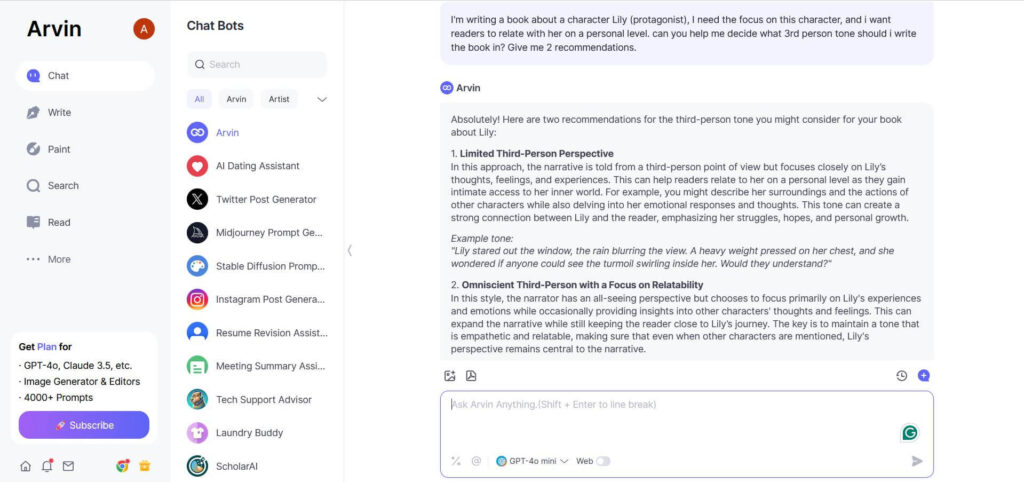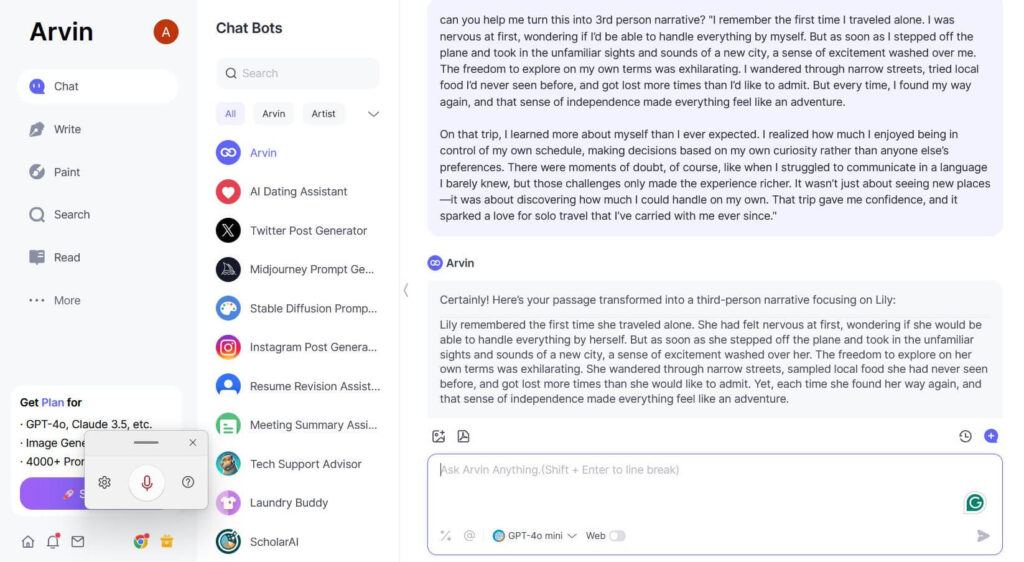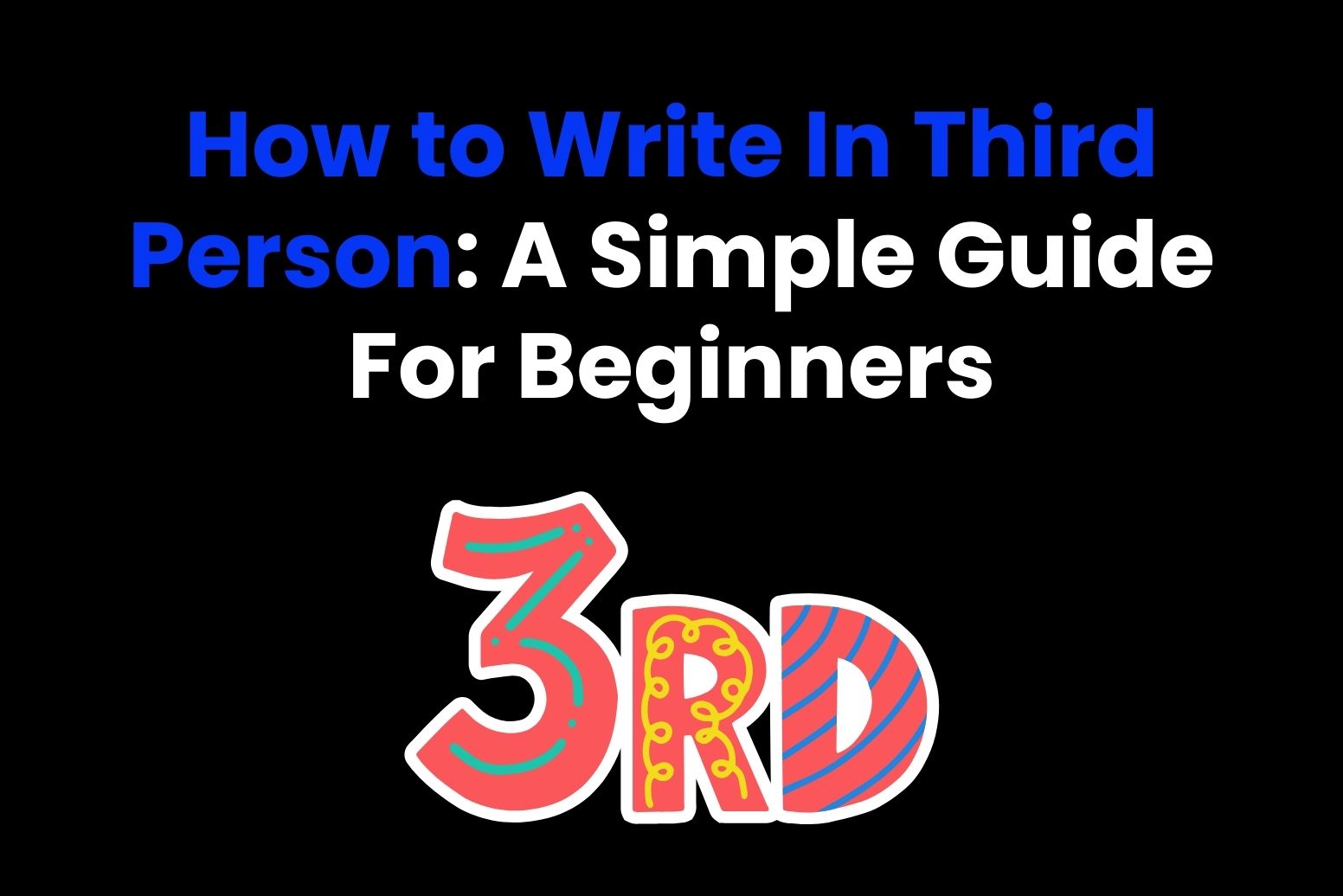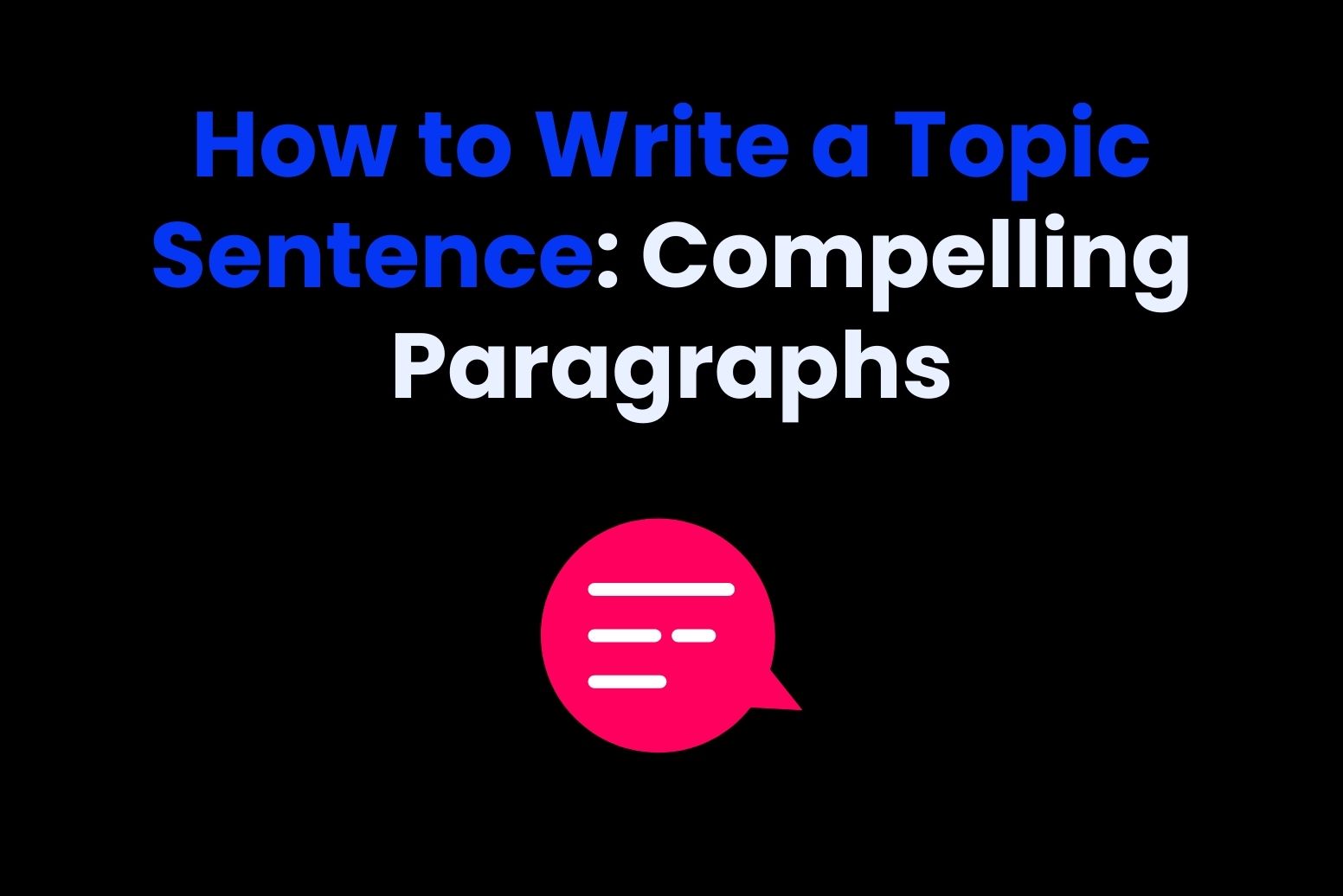Do you think writing in 3rd person is some kind of secret skill only authors or professors have? Well, it’s not! In fact, it’s something you’ve probably already done without realizing it. Learning how to write in third-person narrative can feel a little tricky at first, but it’s one of the most useful skills you can have as a writer.
But here’s the thing: third-person writing isn’t just a “style”—it’s a skill. And like any skill, it takes a bit of practice to nail it. That’s where this guide comes in. In this article, we’re going to break it all down for you in plain, simple steps: what the third person actually is, why it matters, and exactly how to use it like a pro. Ready? Let’s dive right in!

What Is Writing In The Third Person Anyway?
For those of you who don’t know already, let’s start from the basics. If you’re writing in the third person narrative, it means you’re telling the story from a 3rd person’s point of view or an outsider’s point of view. This also means that you cannot use “I”, “we”, or “you” here; instead, you’ll use third-person pronouns here like “he”, “she”, and “they”. You can also use the names of the characters in your story.
Types Of Third-Person Point Of View
Before we talk about how to write in third person, did you know there are actually three different kinds of third-person perspectives? Let us break them down for you.
1. Third-Person Omniscient:
If you’re writing in third-person omniscient, you’re writing like a storyteller who knows everything about everyone in the story. You’re not just watching what the characters are doing, but you also know their feelings and thoughts, even the things they don’t say out loud. This is like you have superpowers that tell you everything that’s going on!
This perspective is great because it gives you total freedom. You can jump between characters, share secrets, or explain things the characters don’t even know. But hey, don’t switch too much, or you may confuse your reader.
Here’s An Example:
“Ruby sat silently on the table, drinking coffee from her mug. Across the table, Tom sat silently, holding his cup like he had just ingested poison. He only ordered coffee because he thought this would make Ruby like her more.”
Here, you can see what both Sarah and Tom are thinking, which makes the scene more interesting.
2. Third Person Limited:
If you stick with just one character’s point of view, this is called the third-person limited point of view. This means you know only this character, you know how they are feeling, and you know what’s going on inside their mind, but you cannot jump to another character.
This type of writing is great if you want your readers to connect with just one character, like the protagonist of your story, because they get to experience everything in the same way as the character. You can also use this type of third-person point of view to create suspense because readers won’t know anything about the other character.
Take This Example:
“Tom watched Ruby sip her coffee, her lips curling into a small smile. He tried not to make a face as he took a sip of his own cup. Why hadn’t he just told her he hated coffee? It was too late now.”
Here, you’re focused only on Tom. You see what he sees and know what he’s thinking, but Sarah’s thoughts are a mystery to you.
3. Third Person Objective:
This type of writing is like you’re watching a movie. You can see what’s happening and hear what the characters are saying, but you don’t get to know what they’re thinking. You can only see the character’s words and actions, but what’s going on in their minds? Well, you can only guess that. This style can be really interesting if you want to keep things mysterious or make readers focus on what’s happening at the moment.
Let’s See This Example:
“Sarah sipped her coffee and glanced out the window. Tom tapped his fingers nervously on the table, his coffee untouched.”
Here, you’re just describing what the characters are doing. You don’t explain why Tom is nervous or what Sarah is thinking—it’s all about their actions.
When Should You Write in the Third Person?

The answer is almost all the time! Here are some scenarios where the third person is the MVP:
- Creative Writing: Whether you’re crafting epic fantasy novels or quirky short stories, the third person lets you explore a variety of perspectives.
- Academic Papers: In formal writing, the third person helps you maintain an unbiased tone. “This research suggests” sounds way more legit than “I believe”, don’t you think so?
- Business Communications: Reports, proposals, or case studies? Yep, the third person is your go-to.
- Journalism: News articles rely on the third person for that professional, factual tone.
So, if you’re wondering whether a third-person tone fits your project, the answer is likely “yes.”
How To Write In Third Person (Step by Step)
Now that you’re all set to dive into writing in the third person, let’s break down how to write in third person narrative. Ready? Let’s go!
1. Pick Your Narrator’s Scope
Before you start writing, you need to decide who is telling your story. Are you going to give the reader a “peek inside every character’s brain” or focus on just one character at a time? Now, pick your choice, whether omniscient, objective, or limited. Your choice will decide how much info your readers get and how connected they feel to the characters. So, think about what best fits your story!
2. Use the Right Pronouns
Pronouns are your best friend when writing in the third person, but you’ve got to use the right ones. Stick to words like “he,” “she,” “it,” “they,” or the character’s name. Steer clear of “I” or “you”—those belong in first and second-person writing. Here’s an example:
Wrong: “I walked to the store and bought apples.”
Right: “Sarah walked to the store and bought apples.”
Notice the difference? The “I” makes it sound like the character is talking directly to you, and we’re trying to keep things third-person, where the character is talked about, not talking to you. Simple, right?
3. Avoid First and Second Person Pronouns
This one’s easy to forget, especially when you’re in the flow of writing, but it’s important. If you find yourself using “I” (first person) or “you” (second person), pause and correct it. Here’s how:
Instead of: “You’ll notice how great the third person is.”
Write: “Readers will notice how great the third person is.”
This keeps everything in third person and makes your writing consistent. You’re telling a story about other people—not talking directly to the reader or making it sound like you’re the character.
4. Stay Consistent
Once you pick a point of view, stick with it. Consistency is everything! Imagine reading a book where one paragraph is written from a character’s point of view, and the next paragraph suddenly switches to someone else’s. It’s jarring and confusing. So, make sure you stay in your chosen perspective unless there’s a good reason to change it (and if you do switch, do it smoothly and with purpose). Here’s a better way to handle consistency:
Confusing: “Tom was nervous about the meeting. I wondered if he’d make it on time.” (Wait, who’s “I”?)
Consistent: “Tom was nervous about the meeting. He wondered if he’d make it on time.” (Ah, now we know it’s still Tom’s thoughts!)
See how much cleaner that feels? It just flows better when you stick to one point of view.
Practice Makes Perfect (Literally)
Want to get really good at writing in the third person? Practice it! Don’t know how? Here’s how you can perfect how to write in third person:

● Rewrite A Paragraph
Here’s an easy one to start with. Take something you’ve already written in the first person—maybe a short story, an email, or even just a quick note—and rewrite it in the third person. This helps you practice switching between the two perspectives and get comfortable with how the third person works.
● Read Like A Critic
Reading is a fantastic way to learn, especially when you read with a purpose. Pick a book or story written in the third person (maybe one of your favourites) and read it critically. Pay attention to how the author uses perspective. Do they switch between different characters’ thoughts? How do they make the reader feel connected to each character’s emotions? Now, learn and implement!
Ask yourself questions like:
- How does the author show the character’s emotions without just telling me?
- When does the perspective shift? Does it feel smooth, or does it feel jarring?
- How does the author make each character’s thoughts and actions clear without confusing the reader?
You’ll be amazed at how much you can learn just by analyzing how others do it.
● Write a Short Scene
Now, it’s time to put your new skills into action! Create a mini-story with one character, and write it in third-person limited perspective. This exercise helps you focus on just one character’s thoughts and feelings so you can get the hang of it without overwhelming yourself.
Maybe you could write about a simple scene like a character getting ready for a big event. You’ll describe everything through their eyes—what they’re thinking, feeling, and noticing.
Stuck Somewhere? Take Arvin’s Help
If you are stuck somewhere or don’t understand how to write in the third person in a certain scenario, you can get help from an AI writing assistant like Arvin AI. Let’s ask Arvin to help you decide what 3rd person tone should you choose:

You can also ask Arvin to turn any content you have written in any narrative into a third person narrative for you or ask for tips on how to write in third person narrative. Yes, you don’t even need to do it on your own. Let’s test how well Arvin AI does here!

It turns out that Arvin knows pretty well how to write in third person narrative. Try it to know for sure!
FAQS About How To Write In Third Person
Here are a few of the most frequently asked questions about how to write in third person:
1. What are 1st, 2nd, and 3rd person examples?
Here are a few examples of each:
- 1st person: I, We
- 2nd person; You
- 3rd person: He, She, It, They
2. Is third-person writing always formal?
Not at all! While the third person can sound formal in some situations (like academic or business writing), it can also be casual, fun, and conversational.
3. Can I write in the third person if my story only has one character?
Absolutely! You don’t need a bunch of characters to write in the third person. If you have just one character, you can still use the third person to tell their story, and it’ll add a bit of extra flavour and depth to your writing. Plus, it allows you to describe things from an outside perspective, which can be useful if you want to add some drama or suspense.
4. How to write in third person without sounding repetitive?
Repetition can happen easily when you’re using a third-person perspective, especially with pronouns like “he” or “she.” A good way to keep things fresh is to mix up sentence structure and vary how you describe the character.
For instance, instead of saying, “Tom walked down the street and turned the corner. He stopped at the café,” you could say, “Tom walked down the street, his thoughts drifting to the conversation ahead. He turned the corner, his eyes landing on the café just up ahead.” This keeps the narrative flowing and keeps the reader engaged.

The Bottom Line
And there you have it! Now you know how to write in third person and why it’s such a powerful tool in your writing toolbox. Want to dive into everyone’s head? Go for omniscient. Focus on one character’s journey? Limited is your friend. Keeping things neutral and straightforward? Objective has got you covered.
So, go ahead and give it a try by getting some commands from Arvin AI to help you practice or even talk about random topics. The more you practice, the easier it’ll become, and soon enough, writing in the third person will feel like second nature. Who knows? You might even start thinking in the third person (okay, maybe not, but you get the idea). Happy writing!






